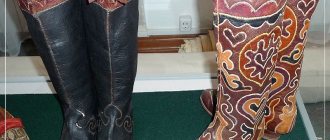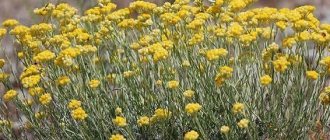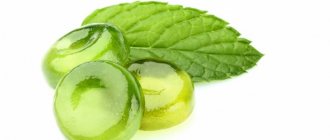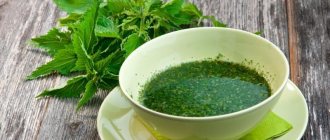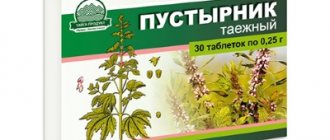Compound
Each filter bag contains 1.5 grams of plant material from bearberry leaves in powder form.
The leaves of the plant contain 8-25% ericoline arbutin glycoside ), about 30% tannins of the pyrogall group, flavonoids ( isoquercitrin , quercetin , hyperoside , quercitrin , myricitrin and myricetin ), ursolic acid , hydroquinone in free form, essential oils and a number of acids ( ascorbic acid , formic acid , cinchonic acid ). The leaves contain a fairly large amount of iodine , essential amino acids and nitrogenous substances.
Bearberry species
The genus of bearberries are small bushes adapted to arctic and subarctic climates. They grow in North America, Northern Europe, Siberia, and in the mountains of Central America.
The genus includes more than 75 species, including:
- Caucasian bearberry (Arctostaphylos caucasica Lipsch);
- Nevada bearberry (Arctostaphylos nevadensis Gray);
- bearberry (Arctostaphylos pungens Kunth);
- creeping bearberry (Arctostaphylos repens (Howell) V.Wells);
- tomentose bearberry (Arctostaphylos tomentosa (Pursh)), etc.
The use of bearberry is recognized in medicine.
Bearberry in Latin : Arctostaphylos uva-ursi (L.) Adans.
Other names: bear's ears, bear's ear, bear's berry, bear's grape, common tormentilla, tormentorum, bearberry, bearberry, bearberry, bearberry, bearberry, wolfberry, lingonberry, zvichaina tormentorum (Ukrainian), etc.
pharmachologic effect
Bearberry leaves contain a number of organic acids and a set of flavonoids , but the main therapeutic effect is provided by the arbutin glucoside contained in the plant. After entering the human body, arbutin, as a result of hydrolysis, breaks down into hydroquinone (diatomic phenol) and glucose. Hydroquinone has an antiseptic effect and has a diuretic and diuretic effect .
The most active process of arbutin breakdown is observed in the urinary tract (alkaline hydrolysis, contact with uric acid), therefore the main properties of bearberry leaves are used in the treatment of nephrological pathologies ( pyelitis , nephritis , urethritis , cystitis and other inflammatory processes in the bladder or renal system) . The medicinal properties of bearberry leaves have also been used for diseases of other organs and systems ( gastritis , goiter , etc.).
Bearberry decoction contains tannins, which have an astringent effect in the digestive tract. Experiments on rats showed that the plant is also an antihypoxic agent (the survival rate among animals increased under hypoxic ).
Hydroquinone is able to increase the activity of redox processes. Under its influence, O-methyltransferase is blocked, which makes it possible to prolong the action of adrenaline . Experimental studies have shown that hydroquinone has a positive effect on metabolism, the ability of tissue to absorb oxygen, normalizes the level of glutathione , potassium and glucose in the blood, neutralizes diabetic ketoacidosis , and in a number of shock states exhibits a hypertensive effect .
Botanical description
Bearberry is a perennial evergreen low shrub. The stems are creeping (30-150 cm), highly branched with reddish-brown bark that peels off easily, bearing numerous branches (especially at the ends). Young branches are green or greenish-brown, finely pubescent.
Bearberry leaves are alternate, small, shiny, thick, leathery, entire, obovate, with a rounded apex, tapering towards the petiole. Wrinkled on both sides with depressed reticulate veins. Length: 1-2 cm, width: 0.5-1.2 cm. Color: dark green above, lighter below. Life expectancy is 2 years, by the end of the third they die.
Bearberry flowers are small, pitcher-shaped on short pedicels, collected in groups of 2-10 in drooping racemes at the tops of the shoots. Color: white, pale pink.
The fruit is a round drupe with 1-5 seeds. Taste: fresh-sweet, mealy. Color: red.
Bearberry blooms in May-June, the fruits ripen in July-August. It reproduces mainly vegetatively, less often by seeds.
Bearberry leaves, instructions for use (Method and dosage)
The medicinal plant is used in medicine in the form of a decoction or infusion 40 minutes after eating. Depending on the severity of the underlying disease, 45-75 ml per day is prescribed. Duration of therapy is 20-25 days. The course can be repeated after 10 days. You can take no more than 4 courses per year. It is recommended to shake the decoction and infusion thoroughly before ingestion. The prepared solution can be stored for 2 days in a cool place.
Preparation of the decoction: 1 filter bag is placed in a special container (glass, enamel), poured with boiled hot water in a volume of 200 ml and covered with a lid. Keep in a boiling water bath for 30 minutes. After cooling, the solution is filtered and the plant material is squeezed out. The volume of the resulting solution is adjusted to 200 ml with boiled water. The infusion is prepared according to a similar scheme, only heating is carried out for 15 minutes, and cooling until squeezing and filtering is carried out for 45 minutes.
Bearberry Traditional medicine recipes
For nervous diseases
Collecting bearberry and motherwort has a good effect as a sedative for various diseases of the nervous system. 1 tbsp. pour 600 ml of bearberry leaves and motherwort grass. water, bring to a boil and simmer over low heat until a third of the liquid has evaporated. Strain.
This is a daily portion that should be drunk, divided into three doses.
For prostatic hypertrophy
Bearberry leaf powder, take 1 tsp. in the morning on an empty stomach and in the evening before bed.
For cystitis
Make a collection of the following medicinal plants: bearberry (leaves) - 25 gr., hernia - 25 gr., parsley - 5-7 gr., celandine (grass) - 5 gr.
Pour 350 ml of raw materials. boiling water, cover with a lid, insulate and leave for 40-50 minutes. Strain.
Take 50 ml. three times a day before meals. The course of treatment is 10 days.
Analogs
Level 4 ATX code matches:
Renel
Samprost
Lingonberry leaves
Uriflorin
Gentos
Bioprost
Testis compositum
Birch buds
Lespefril
Prostopin
Lespeflan
Phytonephrol
Lespenefril
Canephron N
Vitaprost Forte
Vitaprost Plus
Vitaprost
Brusniver
Speman Forte
Speman
Uriflorin.
Indications for use
Decoctions or infusions of bearberry leaves are used internally for diseases of the urinary system (urethritis, cystitis, pyelitis, urolithiasis, pyelonephritis, pyelocystitis, prostatitis). The plant tincture is used externally for eczema, ulcers, long-term non-healing purulent wounds and diathesis.
In folk medicine, bearberry is used for diseases of the bladder and kidneys, diseases of the stomach and liver, colds, rheumatism, bronchial asthma, heart failure, uterine bleeding, venereal diseases (in the form of douching), nervous disorders, metabolic disorders, edema and diabetes. Powder and decoctions are used as an astringent for chronic colitis and digestive disorders. Bearberry tincture is used to normalize sleep, for alcoholism, and also as a painkiller for gout, rheumatism and malignant neoplasms.
The herb of the plant is included in many dietary supplements and preparations.
Reviews of Bearberry Leaves
Infusion and decoction allow you to quickly relieve the unpleasant symptoms that accompany most diseases of the urinary tract: itching and pain when urinating, discomfort in the lumbar region. Patients note a significant improvement in overall well-being after the first doses of the solution. Reviews of allergic responses in predisposed patients are rare. Bearberry leaves are a good addition to the main treatment of urinary tract diseases.
Collection and preparation
Bearberry leaves (bear ears) are most often harvested for medicinal purposes. The collection is carried out twice a year: in early spring after the snow cover melts and before the plant blooms and after the fruits ripen before snow falls. Bearberry twigs with leaves (grass) about 3 cm long are cut with pruning shears. It is strictly forbidden to pluck the plant by its roots, as this leads to the destruction of the thickets. Repeated collection from one plant can be carried out after 3 years.
The twigs are dried in the shade, spread out in a thin layer, preferably on wire racks, with good air ventilation, remembering to turn them over frequently. In the dried raw materials, the leaves are separated from the twigs. Store in cardboard boxes or bags made of natural material in a dry place with good air ventilation. Shelf life – 5 years.
Price for bearberry leaves, where to buy
The cost of 1 package of filter bags in Russia is about 100 rubles. The price may vary depending on the number of bags of raw materials, the region of sale and the pharmacy chain selling the medicinal product.
- Online pharmacies in RussiaRussia
- Online pharmacies in UkraineUkraine
ZdravCity
- Bearberry leaves crushed pack 50 g Ivan-tea JSC
59 rub. order - Bearberry leaves pack 50g JSC Krasnogorskleksredstva
68 RUR order
- Bearberry leaves pores. filter pack 1.5g No. 20OOO RU
71 RUR order
- Bearberry leaves 1.5g filter pack. 20pcs JSC Krasnogorskleksredstva
68 RUR order
- Bearberry leaves powder 1.5g 20pcs Ivan-tea JSC
62 RUR order
show more
The difference between bearberry and lingonberry
Photo: Yandex.Pictures
The fact is that bearberry is very similar to lingonberries, one might say they are similar, like twins. But there is still a difference!
- There are no dots on the underside of the bearberry leaf.
- At the base the leaves are more elongated and narrowed.
- The edges of the sheet are not folded.
- Bearberry berries are denser, have a seed inside, and look mealy when crushed.
